From an architect’s point of view, there are several areas, which can be addressed to improve the ‘human condition’ within each classroom. These are largely invisible considerations, being psychological and environmental. Whilst seemingly invisible they can add immense value to a school by optimising classroom performance, focused specifically on teachers’ and pupils’ requirements, and they can be tailored to a budget.
Instead of redecorating with the same old white paint and buying the usual furniture, this article presents a toolkit of coordinated ideas within which classrooms can be refurbished to make them efficient, stimulating and enjoyable places to develop in.
Acoustics
Acoustic performance is a key consideration to the design performance of a classroom. A standard classroom might have a reverberation time of 1.2 seconds. This means the room might have a slight echo. The ambient noise might be slightly high and the teacher might sometimes need to speak up to be heard over the background interference. This can result in stress to the vocal cords and possible longer-term health issues.
Teachers need to use the classroom to create fun and exciting learning environments. Wall space is important for display and in primary schools the classroom facilitates lots of different activities. Measures can be taken to promote these activities and improve the acoustic performance of the space. Acoustic panels are a very effective way of controlling noise levels in a classroom and are especially effective at high level.
TIP - With a smartphone decibel app, measure the noise levels during class. If the readings regularly peak at 65dB or above, consider acoustic treatment.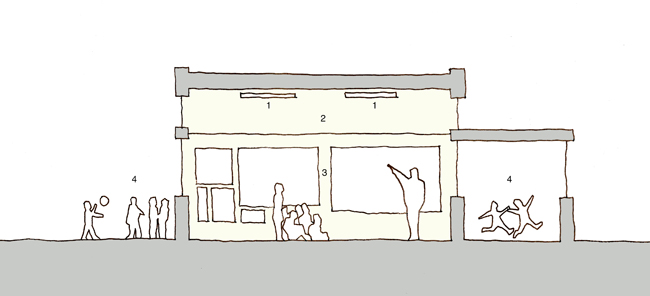
Lighting
Natural light is important for everyone’s psychological and physical well-being. It is a free resource and very valuable to classroom design.
Windows allow light in and also offer a view of the outside world. This is important because it makes the classroom feel larger than it actually is and pupils do not feel claustrophobic. Natural light is dynamic and always changing. This helps to maintain a lively and attentive atmosphere in the classroom, compared to static, electric lighting.
On the flip side, direct sunlight can cause problems, especially in summer. This glaring light can be disruptive to teaching and contributes to overheating. By comparison, low level sunlight (with less energy) on winter afternoons, can bring useful sun light and heat into the classroom.
TIP - Make natural light work for you - light coloured ceilings reflect light in to a room. Solar control roller blinds can be used ‘back to back’ with blackout blinds, to enable light levels to be lowered for use of projectors.
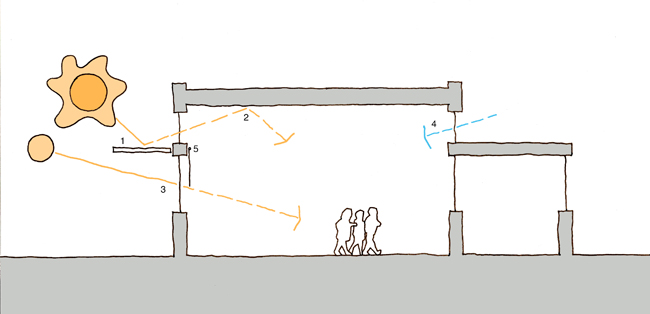
To supplement natural light, the lighting design of a classroom needs to consider electric lighting as part of an integrated strategy. Natural light saves energy and helps the vibrancy of the class with gently changing light levels. Electric lighting by comparison is usually constant. There is a growing market for good quality light fittings and considerable advances have been made with LED lighting technologies. As a result, there is a lot to choose from between new LED and older fluorescent luminaires, which are usually cheaper but still good quality and economical to run.
TIP - Light fittings should be selected and positioned so that they do not cause glare or shadows, with the light source as inconspicuous as possible.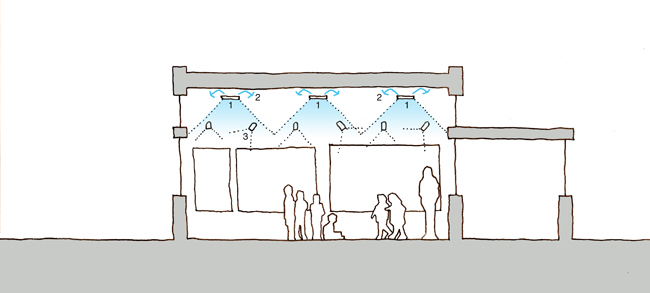
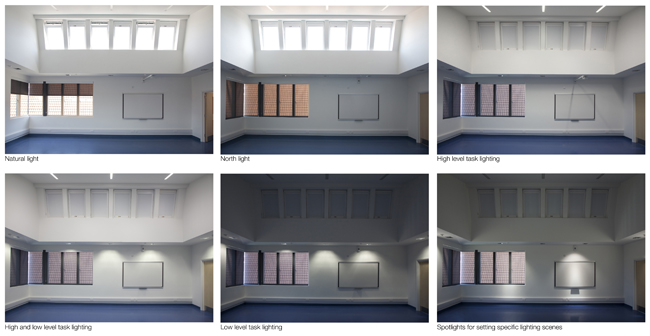
Ventilation
Typically existing school classrooms have a high degree of glazing. Although this is good for natural light, it can prove problematic for overheating in the summer and excessive heat loss in the winter.
TIP - Turning off unused equipment and electric lighting costs nothing and also helps to lessen overheating and save energy and money.
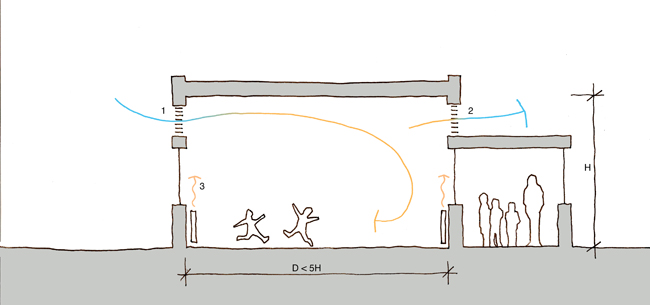
Colour
Colour has a direct relationship with energy use. Black materials absorb 20 times more natural light energy than white, and gains heat in the process. Light colours generally make a room look bigger and dark colours normally make a room look smaller. Choice of colour also plays a significant role in the psychological balance of a classroom environment. Angela Wright, Colour Psychologist at Colour Affects has formulated sets of colour that harmonise together and can be used to encourage peoples’ behavioural patterns within buildings. Her Type 1 Colours are particularly applicable for classroom environments because they instill a buoyant, active atmosphere.
TIP - Blue is a prime learning colour, intellectual in its effect. Strong blues can help to focus the mind and soft blues aid concentration. The optimum learning colour scheme might be a dominant blue with a secondary yellow, or the other way round for variation. A classroom space should never be a single colour. We all need a balance of wavelengths.

Ergonomics
Ergonomic considerations are important to the comfort of pupils and their ability to learn, but it is not just about purchasing quality furniture. With a bit of planning the classroom environment can be designed to help capture childrens’ imagination on a budget.
TIP - Especially in primary schools, furniture, fixtures and fittings can be selected to make a classroom feel more home-like and cosy. Moving away from a hard institutional feel can help pupils to feel more comfortable and relax in to their work. Soft finishes also assists acoustic performance.
Sensory experiences are believed to help learning and develop our perceptions. We explore, discriminate and interpret reality through our senses, which assists in the process of constructing and processing our knowledge. Stimulating environments are key.
Putting it all together
These points are intended to promote some focused thought and discussion about classroom design. If you are considering any work to the school, please bear these notes in mind, and be conscious of the effect of ‘adding to’ the classroom environment. The cost implications might seem a little high, but making a significant difference might only require implementing a few of these ideas. An alternative approach may be to trial a change in one classroom to see the positive effect it can make, then rolling these refurbishments out over the rest of the school, once the benefits have been proven and the budget allows.


















